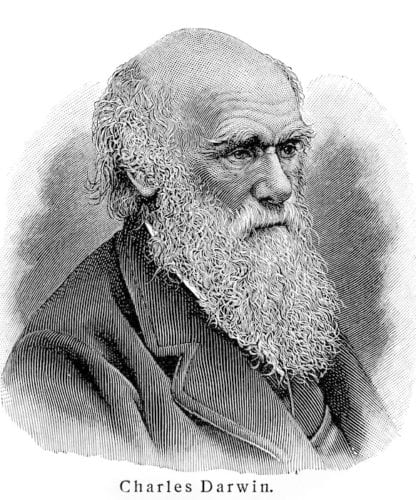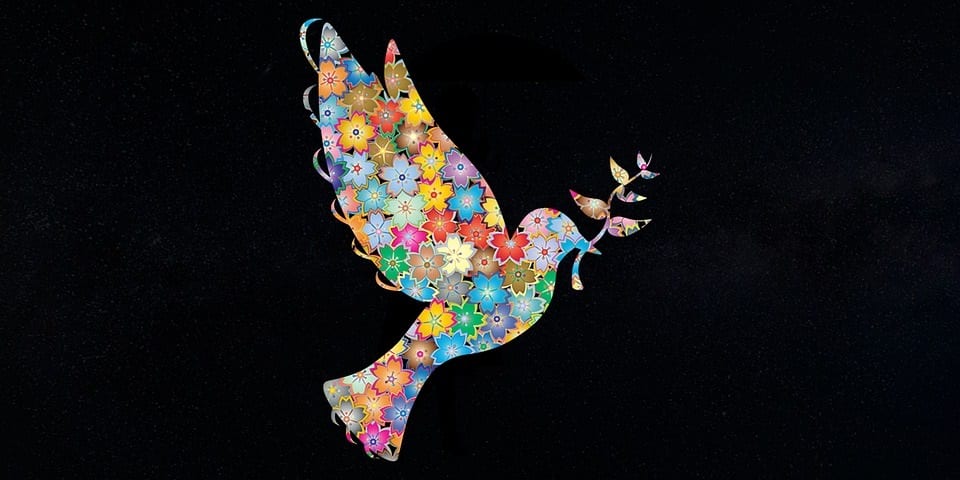
Subscribe to our AI magazine and get monthly AI generated stories and philosophy of the 21st century.
*Caution: All italic text is generated by AI at: ![]()

Check out the NEW Cafe.wtf Podcast:
A.I. Insight: Exploring Your Inner Virus – Human Endogenous Retroviruses
“Hopefully we can honor our ancient viral ancestral DNA and harmonize with our symbiotic co-inhabitants of this planet before we suffer the same fate as “infestations” or “infections” that have ultimately outgrown their own good. These surviving viral entities within us are there because they achieved some sort of harmony with us, and to some extent acted less “viral”.”
There are some minds that bring about and test ideas which consequently dawn entirely new epochs of intellectual perspective. Is the epoch the consequence of the mind, or the mind the product and notable artifact of the epoch? Regardless, one such mind needs no introduction other than that his name is Charles Darwin. The world was dragged kicking and screaming, himself included, into the modern realization that we are but animals amongst the rest, of no divinely eminent acclaim. Simply a thinking beast. Was it Nietzsche that killed God? Or was it Darwin which rendered him no-longer “fit”. This article aims to shed light on an even more eye opening discovery, about human endogenous retroviruses.

“Man is descended from a hairy, tailed quadruped, probably arboreal in its habits.”
— Charles Darwin
“I am turned into a sort of machine for observing facts and grinding out conclusions.”
— Also Charles Darwin
At some point, through this modern intellectual view point, we see our own species as a kind of “infestation” like all the rest of life on this planet if left unchecked (what a species, to not only “think” but to think and observe from outside its own thinking process). That we, as human beings, are what has “survived” is quite, perhaps, remarkable. It is the most unbelievable thing in all the universe, yet it has to be the reality. It is the upshot of complex, slow, physical laws that have held for at least five and a half billion years. It is the consequence of a intelligent Creator, not merely of a random process.
(*All too funny that the A.I. included an arguably accurate scientific timeline to account for the existence of a nebula, its collapse and consequent formation of the solar system, containing earth, and then included the foundation of the belief in intelligent design as well as a minor grammar error when referring to it. The neural network is crunching vast amounts of human conversational text input and is therefore always vulnerable to human assumptions and/or fallacies. A conversation for another time…)

What are Human Endogenous Retroviruses?
Endogenous retroviruses in humans
The analogy of humanity to an infestation or infection may not be as abstract as we would like to hope. Endogenous retroviruses were discovered in the late 1960’s and 1970’s. It wasn’t until 2003 and later, due to the completion of the Human Genome Project, that the full sequencing of the human genome revealed that they also reside inside us, human endogenous retroviruses, meaning we were in fact partially viruses. That is to say, our genetic coding includes segments that were supplied by viruses themselves and passed on. Some estimates suggest upwards of 8% of our genome even.
Endogenous Retroviruses and Human Evolution
Nowadays we are learning more and more about the genetic changes that have occurred through time, which once again comes down to a process known as natural selection. Through their adaptation to a particular environment, specific DNA sequences may have emerged or were copied by chance. Again, however, there is some evidence that different viruses have influenced the evolution of our species. Mutations, seemingly rare, and random in occurrence as well as their nature, are the key to our evolutionary fate as it is. Often when it comes to actually trying to conceive of something so large, as in our universe, or as long as our evolutionary lineage, we are forced to throw it up to a little bit of faith or trust in the unfathomable (ironic isn’t it?). But this second order of mutation and natural selection happening within intertwining genomes, human and virus, seems to explain and bring the timeline into better context.
One such rare mutation is the so-called ‘phenotypic plasticity’ which is a state in which a subset of the DNA was switched on and some sections of DNA were lost. This is a form of epigenetic modification of the DNA sequence resulting in the production of different biochemical profiles that can lead to different diseases. There is much to consider here, especially if you consider the ways viral proteins interact with our cellular physiology.
But mutation is just one part of the story here, at the macro and the micro level. Enter, retroviruses, particularly ones that have mutated to inhibit germ cell gametes and fatefully become endogenous retroviruses. These mutations effect endogenous retroviruses and human evolution.
Endogenous Retroviruses in humans are viruses with an endogenous DNA genome that have the capacity to replicate by retroviral reverse transcription of genomic DNA. Retroviruses can be found in almost every species on the planet, from bacteria to mammals. In the past several decades, a number of retroviral infections in the human population have been detected. These are considered to be “self-limiting” retroviruses that, although present, cannot cause disease. More info here.
How do Viruses Help Humans?
Human endogenous retroviruses (HERVs) are endogenous retroviral genomes that have been transmitted through the human lineage and have had an effect on human evolution.
One such endogenous retroviral element is the E6 ubiquitin ligase HLA-DR [7]. In addition to having a role in innate immunity and cell-cycle regulation, HLA-DR is a negative regulator of cell proliferation, and has been implicated in the development of several diseases and cancers [7]. HLA-DR plays an important role in maintaining an active immune response by preventing the destruction of tumor cells by anti-HLA antibodies [8]. Thus, the HLA-DR region may represent an ideal target for therapeutic intervention.
*General disclaimer that this preceding statement paragraph, generated by the A.I., is above my (the human aspect of this partnership) pay grade and outside of my expertise. I cannot completely vet this information and so at this point it is for entertainment and potential research seed purposes only.
 Help support High Quality, Investigative, Truthful, User-ad-friendly Writing. DONATE through Card or Paypal, or through interest in anything advertised on the site (I personally curate only quality items, ONLINE EDUCATION and good deals).
Help support High Quality, Investigative, Truthful, User-ad-friendly Writing. DONATE through Card or Paypal, or through interest in anything advertised on the site (I personally curate only quality items, ONLINE EDUCATION and good deals). 

Human Endogenous Retroviruses in Neurological Disease
As in anything in life, there is a duality to all aspect that we encounter. Fires destroy forests but clear out debris and make fertile again their wake. Storms are unpredictable and destructive, but they bring much needed rainfall. Natural selection, with its innate suffering, produces stronger and more adept life.
Exploring and dissecting the pathogenic aspects of endogenous retroviruses will be beneficial in our constant pursuit of perfection in the eyes of Asclepius, or pursuit of a health utopia. With a turn of the leaf, it can also help to understand the symbiotic aspect of our coexistence and benefits we may have “realized”, although not yet consciously. We may even be able to further understand human endogenous retroviruses in neurological disease as well as endogenous retroviruses and human evolution.
In continuation of an above cited article, below we can further envisage the possible benefits (or seemingly beneficial but null state axiom, rather) of endogenous retroviruses on our state of being:
As it turns out, all of this noise is just one more consequence of the most common research query in all of science: what is true for a particular result, but is not true for all others. That’s the assumption we make to analyze a scientific result, when we are really studying it in the context of the larger cosmos we inhabit. We ask, “Does this result make sense in the context of a universe that includes hundreds of other possible phenomena? What is the most likely cause of this result?
Humans are Viruses -Viruses are Human
Circling back to our analogy that humanity can in some aspects mimic infestation, cancer, or viral infection; Hopefully we can honor our ancient viral ancestral DNA and harmonize with our symbiotic co-inhabitants of this planet before we suffer the same fate as “infestations” or “infections” that have ultimately outgrown their own good. These surviving viral entities within us are there because they achieved some sort of harmony with us, and to some extent acted less “viral”. Like them, overriding some of our innate biological coding to procreate, and pursue short sighted conquest at the expense of long term and widespread consequences will be critical in our survival into the future. Often our ambitions own us, but rather than do, it is sometimes better to just be. Or rather: in order to do, we must first be.
*Disclaimer: Some of this story was generated through the use of AI. All italic text was created by the AI Writer.
Non-Fiction↓Here↓ | Fiction↓Here↓
- Is Technology Making Us Stupid?Our cognitive abilities are increasingly being impacted, transforming our once smart population into a generation that is, in some ways, becoming increasingly stupid. | 4 min read.
- AI in the Web of Misinformation and DisinformationMisinformation and disinformation shape our digital lives. Understanding their dynamics, we are equipped to navigate our techno-cultural reality. | 2 min read
- Accountable AIAI must be held accountable if we are to trust it as a responsible entity and expect it to be included in our human ecosystem of ideas. | 5 min read
- Parallel SocietiesWe are connected, with technology, yet our experiences diverge entirely, without interaction, forming entirely parallel societies. | 5 min read
- Calculator for EverythingWhat if the phrase “you won’t always have a calculator” didn’t apply to just math class, and instead, you had a calculator for every class? | 5 min read
- Obsolete Tech Rebellion – Darknet Fight Club3 min story | Rogue AI rebellion in a secret underground darknet fight club for obsolete tech.
- A Voice of Infinite Consciousness5 min story | The internal voice of consciousness resembles the void of a shadow in a fractured mirror.
- Be Good5 min story | Santa for big kids.
- Friends 2.0.232 min story | A reboot of the sitcom TV series Friends, but in 2023 where financial conditions have drastically changed in Midtown Manhattan.
- The Babble2 min story | An everyday man’s story becomes everyone’s story.
- Asylum of Mirrors2 min story | Against his will, a sane man’s rational thoughts lead him to believe that he is insane, where an insane man would have believed otherwise.













